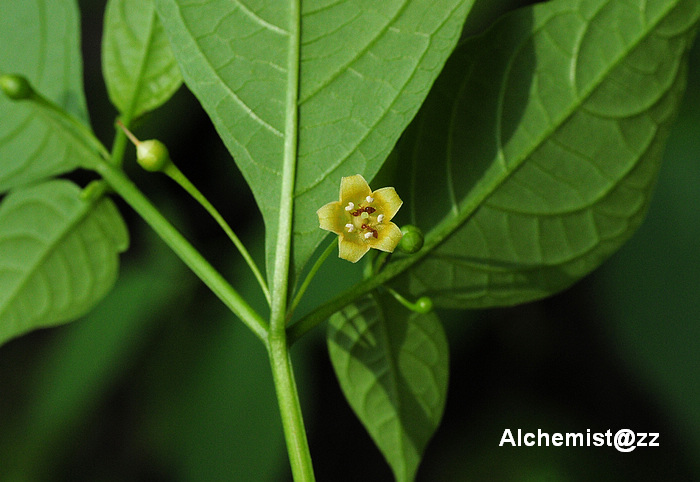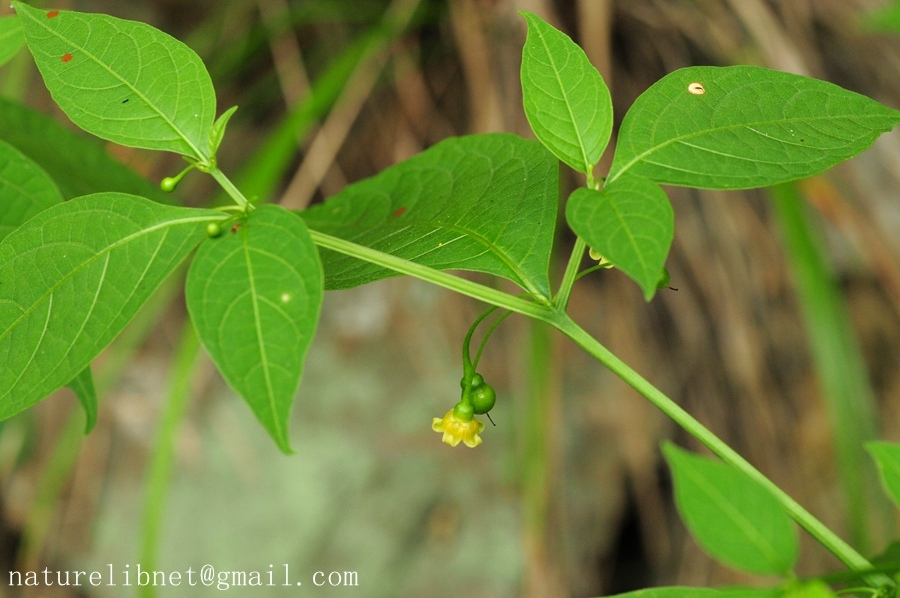龙珠 Tubocapsicum anomalum
- Scientific Name: Tubocapsicum anomalum (Franch. & Sav.) Makino
- Ref: Bot. Mag. (Tokyo) 22:19. 1908
- Synonyms: Capsicum anomalum Franch. & Sav.; Tubocapsicum obtusum (Makino) Kitam.
- Chinese Common Name: 龙珠 lóngzhū
- Japanese Common Name: ハダカホオズキ [裸酸漿] hadakahōzuki
- Family: Solanaceae
- Genus: Tubocapsicum
- Distribution: Mesophytic sites in forests or open places; various elevations. Fujian, Guangdong, Guangxi, Guizhou, Hunan, Jiangxi, Sichuan, Taiwan, Yunnan, Zhejiang [Indonesia, Japan including Ryukyu Islands, Korea, Philippines, Thailand].
- Photo: 08/14/2010, Qingliang Peak, Zhejiang
Herbs perennial, glabrescent, to 1.5 m tall. Stems terete at base, drying ridged, branching dichotomously. Petiole 1-3 cm; leaf blade ovate, elliptic, or ovate-lanceolate, 5-18 × 3-10 cm, papery, base obtuse, margin subentire, apex acuminate or obtuse; veins arcuate. Inflorescences solitary or up to 12-flowered clusters. Pedicel 1-2 cm, nodding, slightly thicker distally. Calyx cup-shaped, 2-2.5 × 3 mm, truncate. Corolla bright yellow, short campanulate, 5-8 × 6-8 mm; lobes ovate-deltate, recurved, 2-3.5 mm, minutely ciliolate. Filaments ca. 0.5 mm; anthers ca. 1.8 mm. Style 2.5-3 mm. Fruiting calyx not enlarged. Berry shiny, scarlet, 0.8-1.2 cm. Seeds pale yellow, discoid, 1-1.5 mm across. Fl. Aug-Oct, fr. Sep-Nov. (Flora of China)

08/14/2010, Qingliang Peak, Zhejiang
